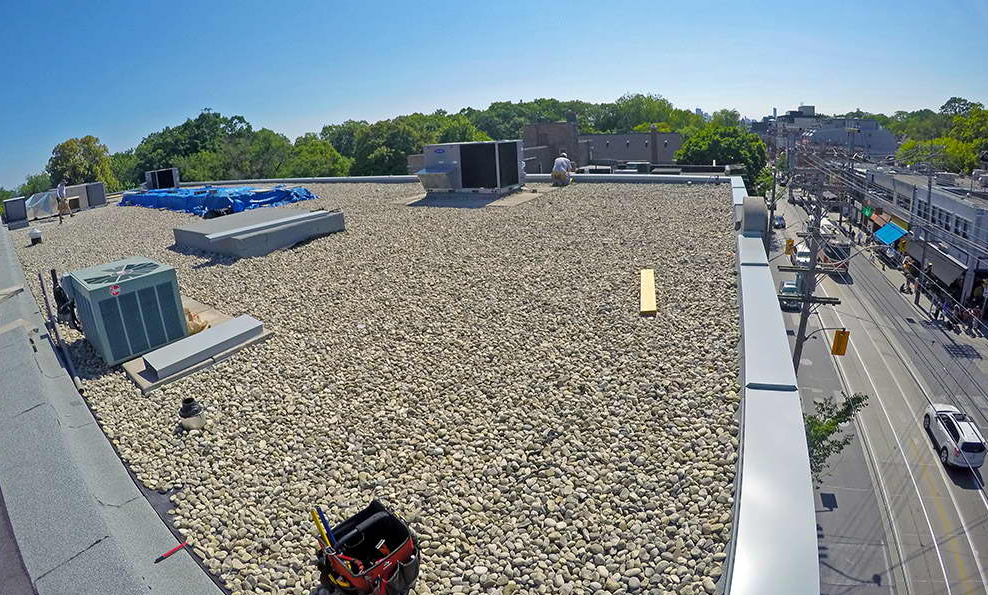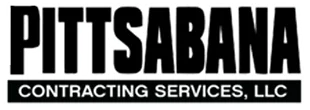Welcome to Pittsabana, your premier contracting services in Pittsburgh, Pennsylvania, offering effective solutions for all your roofing and guttering needs. In this article, we will explore the problems associated with tar and gravel commercial roofs. Tar and gravel roofs, also known as built-up roofs, have been widely used for their durability and weather resistance. However, they are not without their issues. We will delve into the installation process, highlight the top problems often encountered with these roofs, and explore alternative roofing options. Read on to discover how Pittsabana can help you with your commercial roofing requirements.
What is a tar and gravel commercial roof?
A tar and gravel commercial roof, also referred to as a built-up roof (BUR), is a traditional roofing system widely used in commercial buildings. It consists of multiple layers of bitumen (tar) and reinforcing fabrics, topped with a layer of aggregate gravel. The multiple layers create a strong and durable barrier against the elements, making it a popular choice for commercial applications.
Tar and gravel roof installation
The installation process for a tar and gravel roof, also known as a built-up roof (BUR), involves several steps. Here is a comprehensive list of the typical installation process:
1. Roof Preparation:
– Ensure the roof surface is clean, free from debris, and properly prepared for installation.
– Inspect the roof for any existing damage, such as leaks, cracks, or weak spots, and address them before proceeding.
2. Installing Base Layer:
– Apply a base layer of bitumen (tar) on the prepared roof surface using a roofing mop or sprayer.
– Spread the bitumen evenly to create a solid foundation for the multiple layers that will follow.
– The thickness of the base layer may vary depending on the specific project requirements.
3. Placing Reinforcing Fabrics:
– Embed reinforcing fabrics, such as fiberglass or polyester, into the hot bitumen layer.
– Roll out the fabric sheets over the bitumen and use a roofing mop to press them firmly into place.
– Ensure the fabrics are completely saturated and adhere well to the bitumen layer.
4. Adding Additional Layers:
– Apply successive layers of bitumen and reinforcing fabrics, typically in a two or three-ply system.
– Heat each layer of bitumen to a suitable temperature using a roofing torch or kettle, then spread it evenly.
– Embed the reinforcing fabrics into each bitumen layer, ensuring proper adhesion and consolidation.
5. Smoothing and Tapering:
– Use a roofing mop or trowel to smooth the surface of each bitumen layer, removing any air pockets or wrinkles.
– Create a gradual taper on the roof surface to facilitate proper water drainage.
– Ensure the final surface is level and uniform, providing a suitable base for the gravel layer.
6. Applying Gravel Layer:
– Spread a layer of aggregate gravel evenly over the hot bitumen surface.
– The gravel acts as a protective barrier, shielding the roof from UV rays and helping with water runoff.
– Use rakes or shovels to distribute the gravel uniformly, ensuring adequate coverage across the entire roof area.
7. Final Inspection:
– Conduct a thorough inspection of the completed tar and gravel roof to check for any defects, inconsistencies, or potential issues.
– Address any remaining imperfections, such as loose gravel or uneven surfaces, before concluding the installation process.
Please note that the installation process may vary slightly depending on the specific project requirements, local building codes, and the expertise of the roofing contractor. It is always recommended to consult with a professional roofing contractor for a precise and accurate installation process tailored to your specific project.
Top Problems with Tar and Gravel Commercial Roofs
1. Water leakage:
One of the most common problems with tar and gravel roofs is water leakage. Over time, the multiple layers of the roof can develop cracks or gaps, leading to water penetration. Additionally, the gravel layer can shift or erode, exposing vulnerable areas to potential leaks. Regular inspections and maintenance are crucial to identify and address these issues promptly.
2. Ponding water:
Flat or low-slope tar and gravel roofs are susceptible to ponding water, where water accumulates and forms puddles. Ponding water can exert excessive stress on the roof structure, compromising its integrity. It can also contribute to leaks, accelerated deterioration, and the growth of algae or mold. Proper drainage systems and regular roof inspections can help mitigate ponding water issues.
3. Weight and structural concerns:
Tar and gravel roofs are relatively heavy due to the multiple layers of bitumen and the gravel topping. This additional weight can pose a strain on the building’s structure, particularly in older or weaker buildings. It is crucial to ensure that the structure can support the weight of the roof and take necessary precautions during installation or repairs.
4. Maintenance challenges:
Maintaining tar and gravel roofs can be challenging. The gravel layer may become dislodged or compacted, leading to uneven protection and potential damage. Regular maintenance, such as debris removal, gravel reapplication, and patching any cracks or blisters, is essential to prolong the lifespan of the roof.
5. Limited insulation:
Tar and gravel roofs have limited insulation properties compared to modern roofing systems. This can result in higher energy costs as the building’s heating or cooling systems need to compensate for heat transfer. Supplementing the roof with additional insulation or considering alternative roofing options can help improve energy efficiency.
Alternatives to Tar and Gravel Roofs
Considering the issues associated with tar and gravel commercial roofs, it’s worth exploring alternative roofing options. Here are a few alternatives that offer improved performance and durability:
1. Single-ply membrane roofs:
Single-ply membranes, such as EPDM (ethylene propylene diene terpolymer) or TPO (thermoplastic olefin), offer excellent weather resistance, durability, and ease of installation. These roofs consist of a single layer of synthetic material, eliminating the need for multiple bitumen layers and gravel topping.
2. Modified bitumen roofs:
Modified bitumen roofs combine the durability of traditional built-up roofs with the convenience of modern roofing materials. These roofs use reinforced sheets of modified bitumen, typically installed in a two-ply system. They offer enhanced flexibility, strength, and resistance to temperature fluctuations.
3. Roof coatings:
Applying a reflective roof coating can significantly improve the performance of an existing tar and gravel roof. These coatings create a seamless, waterproof barrier that helps regulate the building’s temperature and extends the roof’s lifespan. Additionally, they can reduce energy costs by reflecting sunlight and reducing heat absorption.
Conclusión
In summary, while tar and gravel roofs have been widely used for commercial applications, they come with their fair share of problems. Water leakage, ponding water, weight concerns, maintenance challenges, and limited insulation are among the common issues associated with these roofs. Pittsabana understands these challenges and offers effective roofing solutions tailored to your specific needs. Consider exploring alternatives such as single-ply membrane roofs, modified bitumen roofs, or roof coatings to address the problems and improve the longevity and performance of your commercial roof. Contact Pittsabana today for expert roofing and guttering services in Pittsburgh, Pennsylvania



